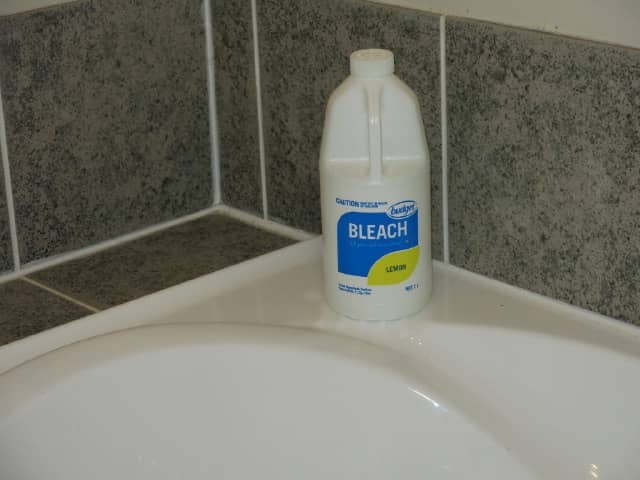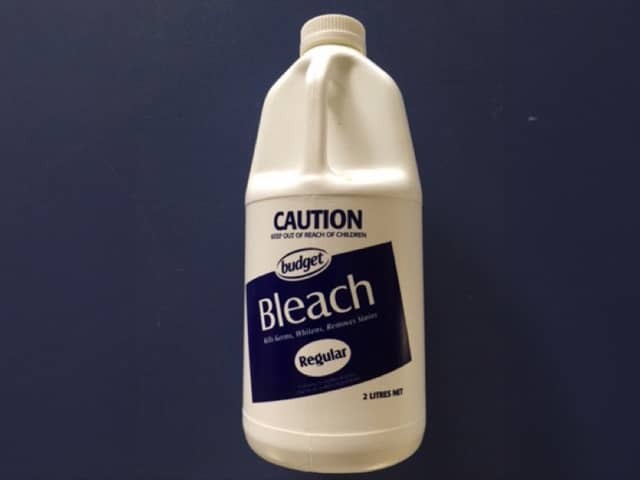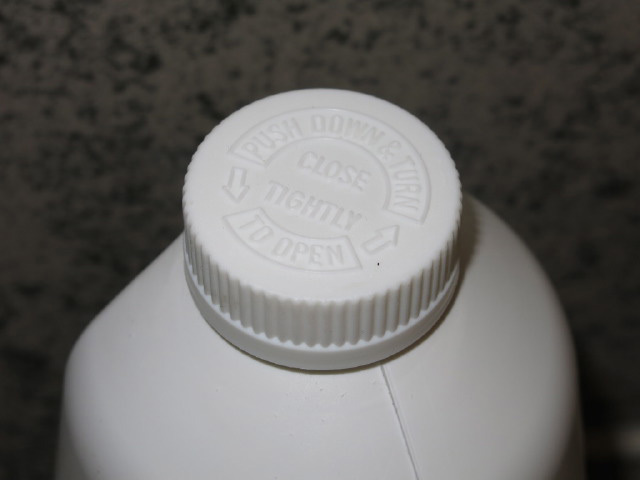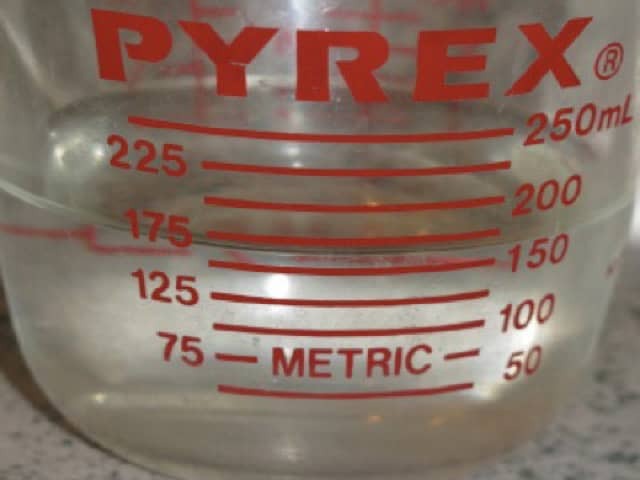Main menu
Common skin conditions

NEWS
Join DermNet PRO
Read more
Quick links
Bleach baths in patients with skin infections — extra information
Bleach baths in patients with skin infections
Author: Kevin Zheng, Medical Student, University of Auckland, New Zealand; Chief Editor: Dr Amanda Oakley, Dermatologist, Hamilton, New Zealand, August 2015.
Introduction
Skin infections
How it works
Introduction - bleach bath
Uses
How to use
Adverse effects
Introduction
Bleach baths are recommended in patients with frequent skin infections to reduce skin colonisation by pathogenic bacteria, particularly Staphylococcus aureus. Bleach baths have been reported to reduce the severity of atopic dermatitis and to reduce the need for topical steroids and antibiotics.
Skin infections
Staphylococcal infections of the skin and soft tissue are common, especially in children, and can be severe. Despite treatment, more than 20% of patients with skin and soft tissue infections have a recurrence within three months. Primary staphylococcal skin infections include:
Secondary staphylococcal infections include:
- Infected eczema
- Infected wounds, including surgical wounds and trauma.
Predisposing factors for skin and soft tissue infections include:
- Bacterial colonisation of the patient's skin with S. aureus
- The colonisation of a family member's skin
- Colonisation with methicillin-resistant S. aureus (MRSA)
- Dermatitis, particularly atopic eczema, discoid eczema and venous stasis eczema.
How can skin be decolonised?
Attempts to reduce S. aureus by decolonisation of the skin include combinations of:
- Bleach baths or shower washes
- Mupirocin nasal ointment
- Oral antibiotics (eg, flucloxacillin, rifampicin, doxycycline)
- Chlorhexidine solution as a bath or shower antiseptic cleanser
- General hygiene and wound care.
What is a bleach bath?
Bleach baths are dilutions of household bleach with water in a bath. The concentration of chlorine is similar to that of a swimming pool. It has antimicrobial action.
- The active compound in commercial household bleaches is sodium hypochlorite (NaOCl).
- Bleach contains 3–6% available chlorine (Cl2), approximately 0.5–1.5% sodium hydroxide (NaOH) as a stabiliser, small quantities of surfactants, and perfume.
- At pH 11–13, it is an alkaline aqueous solution with major oxidising properties.
- Sodium hypochlorite 0.0006% is also available as a convenient wash suitable to use in a shower.
Why use a bleach bath?
In conjunction with other methods of decolonisation, bleach baths reduce rates of recurrent primary and secondary skin and soft tissue infections.
Bleach baths have a broad spectrum of action against:
No microbial resistance has been reported to sodium hypochlorite. The effect of bleach baths on decolonising the patient's skin is only temporary, so must be repeated regularly.
Bleach baths also seem to reduce inflammation and itching in eczema.
How to use a bleach bath
Mix 2 ml of 2.2% household bleach for every 1 litre of water to make a 0.005% solution. Brands vary strength, so check the label. If the concentration is higher, use less bleach, and if the concentration is lower, use more bleach.
Bath type |
Usual capacity |
Millilitres (mL) of 2.2% bleach required |
|---|---|---|
Baby bath |
15 litres of water |
30 ml (approx. two tablespoons) |
Full-sized bath |
80 litres of water (for 10 cm deep) |
160 ml (approx. half a cup) |
- Soak trunk and limbs in the bath for 10–15 minutes. Do not submerge head.
- Rinse off with warm tap water and pat dry with a towel. Avoid sharing towels.
- Apply topical steroid and moisturisers if prescribed.
- Bleach baths are recommended at least twice a week.
- Keep bleach out of reach from children.

Household bleach

Unperfumed is best

Childproof top

160 ml measured out for full bath
What are the adverse effects of a bleach bath?
Exposure to bleach baths can lead to:
- Dry skin
- Rash/dermatitis/skin irritation
- Asthma exacerbation
- Nasal irritation.
These symptoms are often due to added perfumes or detergents in the bleach. If troublesome, try another brand. Do not apply the bleach directly to the skin.
Toxicity or poisoning is rare but potentially very serious. It is usually due to ingestion of undiluted solution. Keep bleach in its original container with a child-proof top and make sure young children are not able to open it.
Ingestion of small volumes may lead to:
- Irritation of the oropharynx,
- Burning sensation in the mouth and throat
- Thirst
- Nausea
- Vomiting
- Haematemesis (vomiting blood).
Ingestion of large amounts or more concentrated solutions can lead to:
- Corrosion of the mucous membranes
- Chest and abdominal pain
- Watery diarrhoea
- Melaena (blood in faeces)
- Ulceration or perforation of the oesophagus or stomach
- Haemorrhage and shock.
References
- Barnes TM, Greive KA. Use of bleach baths for the treatment of infected atopic eczema. Australas J Dermatol. 2013;54(4):251-8. doi:10.1111/ajd.12015 PubMed
- Fritz SA, Camins BC, Eisenstein KA, et al. Effectiveness of measures to eradicate Staphylococcus aureus carriage in patients with community-associated skin and soft-tissue infections: a randomized trial. Infect Control Hosp Epidemiol. 2011;32(9):872-80. doi:10.1086/661285 PubMed Central
- Maarouf M, Shi VY. Bleach for atopic dermatitis. Dermatitis. 2018;29(3):120-6. doi:10.1097/DER.0000000000000358 PubMed
- Smith CH, Goldman RD. Staphylococcus aureus decolonization for recurrent skin and soft tissue infections in children. Can Fam Physician. 2012;58(12):1350-2. Journal
- Bleach bath instruction handout — Starship Hospital, Auckland
On DermNet
Other websites
- Eczema: Bleach bath therapy — American Academy of Dermatology. Includes video
